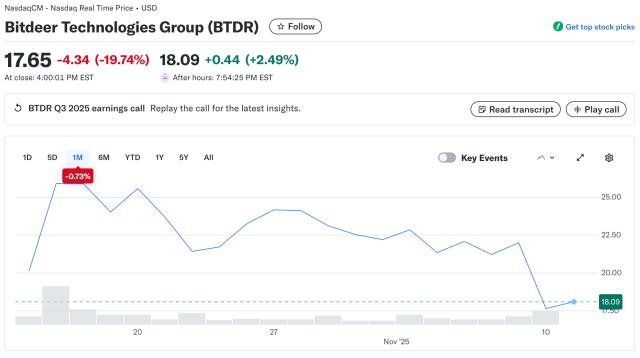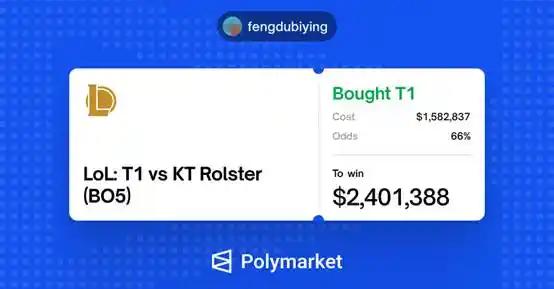Original source: KK.aWSB
This "UNI Fication" upgrades Uniswap's business model from a "protocol that only does transactions" to a "super liquidity hub that integrates trading volume, MEV, aggregation, and L2 revenue into token deflationary power." UNI is shifting from a "weak value governance token" to a "strong deflationary, strong alignment value capture token."
0) 3-minute speed reading
The agreement fee is used entirely to burn UNI: the revenue is not distributed as dividends or deposited into the national treasury, directly leading to deflation.
Unichain Sequencer Fee → Destroy UNI: L2 revenue is incorporated into the burning channel, strongly linking growth and deflation.
One-time destruction of 100 million UNI: a retrospective compensatory destruction of historical "if agreement fees were ever initiated", reducing balance sheet size and improving efficiency.
PFDA (Agreement Fee Discount Auction): Internalize MEV revenue into agreement revenue → reburn UNI.
Aggregator Hooks: v4 natively aggregates external liquidity and charges external routes → reburn.
Labs' "zero front-end fee" approach to protocol growth: Stop charging for the interface/wallet/API, and use free services to accelerate traffic and create a closed loop.
Organizational Collaboration: Foundation functions are integrated into Labs, a growth fund is established, with a single objective: to expand the protocol and strengthen destruction.
Unisocks: Migrating to Unichain v4 and burning LP positions highlights the "migration → growth → destruction" paradigm.
1) What business logic has this upgrade changed?
The past Uniswap
Value source: Only transaction matching (AMM), no systematic value return to tokens (due to concerns about regulatory risks associated with dividend-based designs).
Governance token UNI: Weak value capture (has governance rights, but no real-pegged income).
Uniswap after this
Value sources: Diversified and "internalized" transaction protocol fees (v2/v3/v4), Unichain (Sequencer fees), MEV internalization (PFDA), and external liquidity aggregation fees (Aggregator Hooks).
Value return method: All funds are put into the destruction pool → deflation (not dividends, and do not go through the national treasury).
Governance token UNI: strong deflation + strong alignment (the more the protocol is used and the faster the chain grows, the more it burns).
The core change is from "more use ≠ more value" to "more use = more combustion = more value".
2) In-depth analysis of each of the eight major measures (what to do → why → impact)
2.1 The agreement fee will be used uniformly for destruction.
What it does: All protocol fees generated in v2/v3/v4 are uniformly entered into the "burn channel" and cannot be misappropriated.
Why: Improved regulatory window; capturing token value through a "burning rather than dividends" approach.
Impact: Establishes a flywheel of "use -> revenue -> destruction -> scarcity", making UNI a stronger deflationary asset.
2.2 All Unichain Sequencer fees are used for destruction.
What to do: Incorporate the L2 layer Sequencer charges into the destruction process.
Why: Uniswap's own L2 growth should directly strengthen UNI's value anchor.
Impact: UNI possesses L2 revenue attributes; Unichain transaction activity has become a strong leading indicator of burning.
2.3 One-time retrospective destruction of 100 million UNI
What to do: Burn 100M UNI directly from the national treasury (approximately equal to the cumulative destruction that should have occurred "since the start of the fee in 2020").
Why: To reset the supply curve and market expectations with "retroactive compensation".
Impact: Immediate balance sheet reduction, increased scarcity and market signal strength (“value reversion” narrative).
2.4 PFDA: Agreement Fee Discount Auction, "Contractualizing" MEV Revenue
What it does: Sell “agreement fee discount rights” within a certain time window, with the market maker/volume maker bidding; the auction proceeds go into a burn pool.
Why: To systematically reclaim the profits that were originally taken by MEV back to the protocol layer.
Impact: 1) Improve LP experience (reduce uncompensated withdrawals); 2) Stabilize transaction quality; 3) Expand the sources of destruction.
2.5 Aggregator Hooks: v4 Native Aggregator & Charging for External Liquidity
What it does: Collect protocol fees for transactions routed to external pools/external DEXs.
Why: Uniswap does not only act as an AMM, but also as an "on-chain matching + aggregation routing center".
Impact: Monetize the "routing value" of external liquidity → destroy it, building a moat for the "full-chain liquidity hub".
2.6 Labs discontinues charging for the frontend/wallet/API, switching to protocol-based growth.
What it does: The interface, wallet, and API are all free; Labs only does things that benefit the growth of the protocol (contractual constraints).
Why: Accelerate customer acquisition and retention with "zero upfront fees" and "centralize" commercialization momentum to the agreement (i.e., destroy it).
Impact: Greater traffic & transactions → Greater agreement fees → Greater data destruction; Improved developer and user goodwill.
2.7 Organizational Restructuring: Foundation → Labs, with a growth fund established.
What to do: Integrate employees, unify goals, and allocate funds to "growth-first" projects and incentives.
Why: To reduce governance friction and redundant investment, and to improve pace and execution.
Impact: Clear KPIs: Increase transaction volume, implement Unichain, implement PFDA, and act as an aggregator → Implement data burning.
2.8 Unisocks: Migrated to Unichain v4 and burned LP positions.
What to do: Migrate the Unisocks liquidity held by the governance team to the blockchain and destroy the LPs.
Why: To drive traffic to Unichain, while simultaneously conveying the symbolic meaning of "chain migration -> growth -> destruction".
Impact: Set an example and encourage more assets/communities to migrate to Unichain (L2 revenue and ecosystem linkage).
3) How exactly does the "deflation flywheel" operate?
Transaction activity (v2/v3/v4 internal + external aggregation)
→ Output Protocol Fees → Unified Revenue Pool (including Unichain Sequencer and PFDA Auction)
→ Firepit/Destruction Channel → UNI Supply Decreasing (100 Million+ at once, continuously burning)
→ Scarcity increases / Price anchoring increases → More developers/LPs/market makers flock in → More trading volume… (positive feedback)
Intuitively speaking, the "burning logic" of Ethereum EIP-1559 has been replicated and extended to the multi-source revenue scenario of DEX + L2 + aggregator + MEV.
4) What does this mean for key stakeholders?
For LPs (Liquidity Providers)
A healthier market-making environment is expected (MEV internalization and PFDA improve the "being exploited" experience).
After the agreement fee is enabled, it is necessary to closely observe the actual changes in returns brought about by the LP/agreement fee allocation structure and pool type selection (different fee tier strategies will diverge).
For traders
The interface and wallet are free, the routing is smarter (v4 hooks + aggregation), the transaction depth is better, and the slippage is smaller.
Market makers participating in PFDA can optimize their costs within the scope of compliance.
For developers/project teams
Uniswap v4's programmability and aggregation capabilities enable more product forms (custom hooks, strategy pools).
Leveraging Unichain's lower costs and native ecosystem traffic, we build peripheral protocols for "strategy/routing/market making/insurance/risk control," providing a competitive edge over rivals (1inch/Matcha/CowSwap/Sushi/Curve, etc.).
Aggregator: Uniswap internalizes your core business (the "commission" from external routes).
AMM: With the combined effects of protocol fees, asset burning, and L2 revenue, Uniswap's "network effect" is stronger, and its status as the "default entry point" for asset and transaction queues is reinforced.
5) Quantitative Intuition: Combustion Scenarios Under Several "Simplified Assumptions" (Illustrated)
The following is purely illustrative (not predictive) to help understand the mechanism of quantitative change leading to qualitative change:
Annualized trading volume of $1.8T (the volume mentioned in the tweet), assuming an average comprehensive protocol fee of x bps (basis points).
Annual “Agreement Revenue” ≈ $1.8T × x bps.
If there is an additional y% revenue (Unichain Sequencer, PFDA, aggregator), then the total burn base ≈ protocol revenue × (1 + y%).
If the circulating market capitalization is M, then the annualized burn rate is approximately (total burn base / M).
Intuition: For every 1 bps increase in x, or a 10% increase in incremental revenue for y, the annualized burn rate is likely to see a significant increase. Implication : Compared to simply adjusting protocol fees, increasing Unichain activity, strengthening PFDA, and deepening aggregator development may be more sustainable in boosting the total burn rate.
6) Risks and uncertainties
Fees and detailed parameters: How to set and dynamically adjust fees for different pool types and chains is related to the balance between LP returns and trading depth.
Implementation pace/technical complexity: v4 hooks, PFDA, and cross-chain aggregation bring engineering and security challenges (requiring strict auditing and risk control).
Regulatory changes: Although the current window has improved, cross-border/interstate regulatory differences could still cause policy disruptions.
Competition and diversion: Fee wars/liquidity wars will continue among other blockchain AMMs, matching DEXs, and centralized exchanges.
Consistency in governance and execution: While a single KPI is beneficial after organizational mergers, it is still necessary to avoid a mismatch between the goals of "growth and security".
In summary, this is not a "feature update," but a "business model restructuring."
Uniswap internalizes and combines AMM, aggregator, L2, and MEV into a unified value capture engine;
UNI is no longer a "governance token + narrative", but a factual value anchor of "governance + deflationary burning";
All of our growth efforts (free front-end, organizational mergers, growth funds) are in service of “more destruction”.
From today onwards, every new transaction volume on Uniswap is more like paying for the scarcity of UNI.
Twitter: https://twitter.com/BitpushNewsCN
BitPush Telegram Community Group: https://t.me/BitPushCommunity
Subscribe to Bitpush Telegram: https://t.me/bitpush








